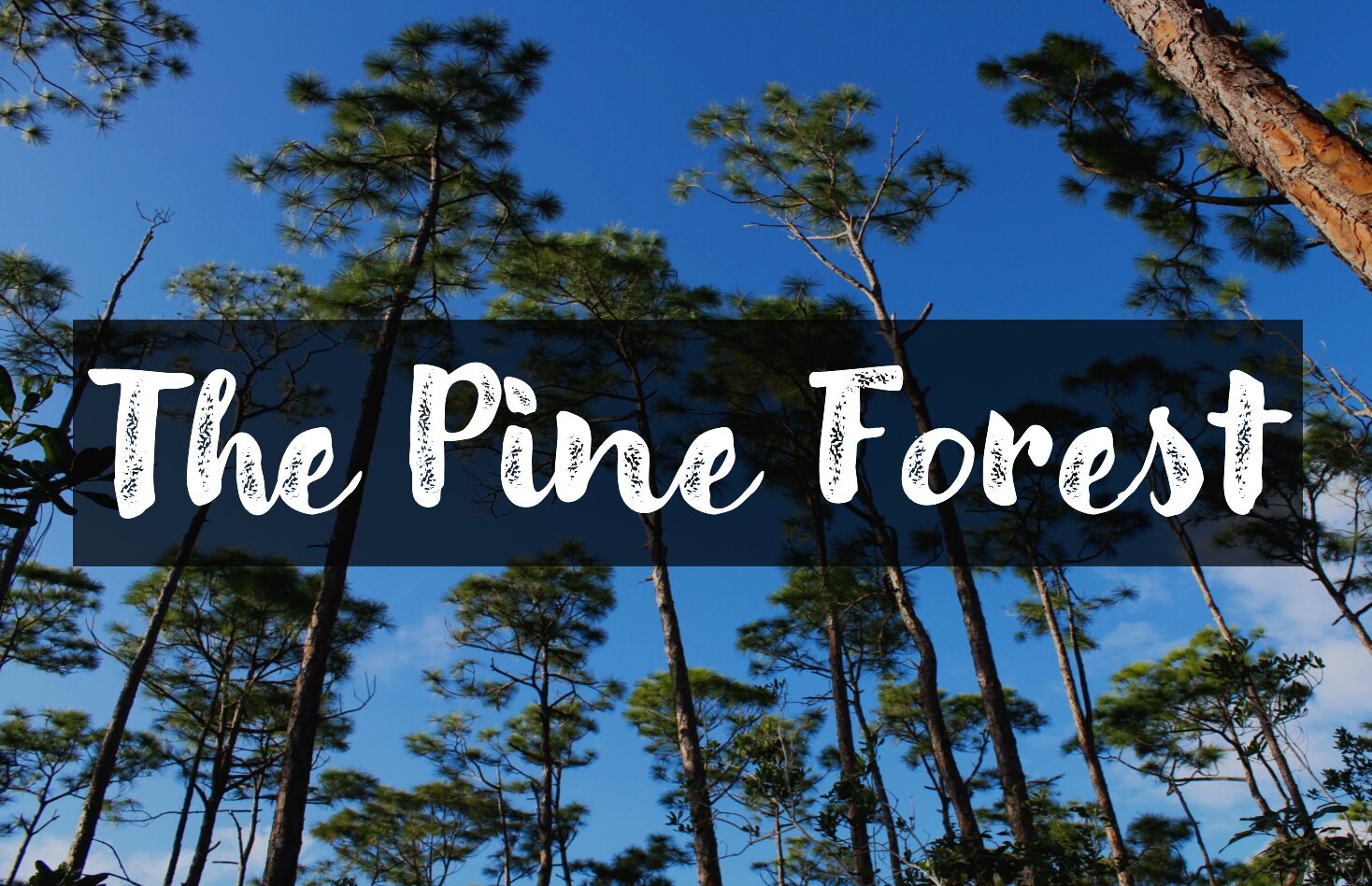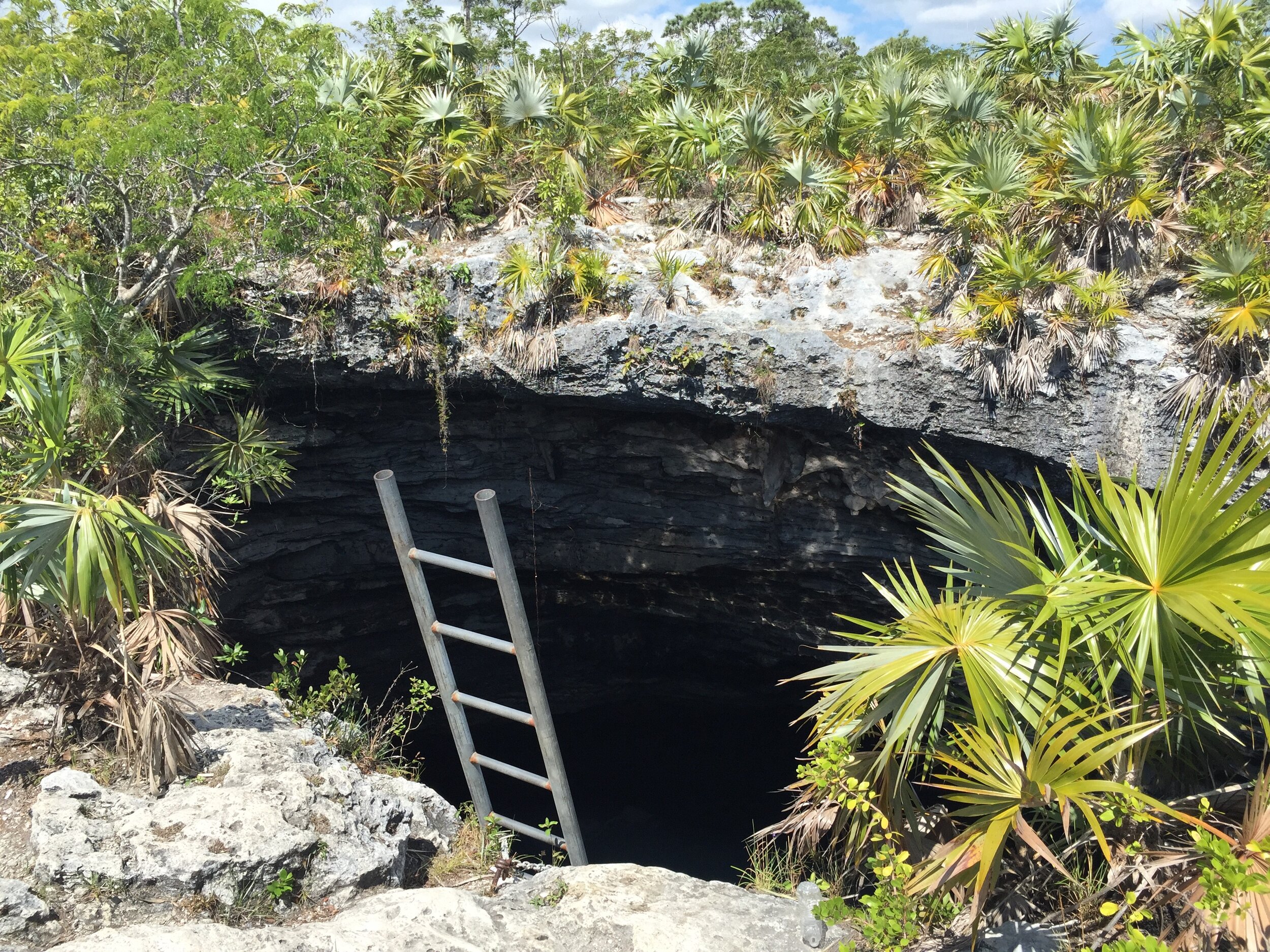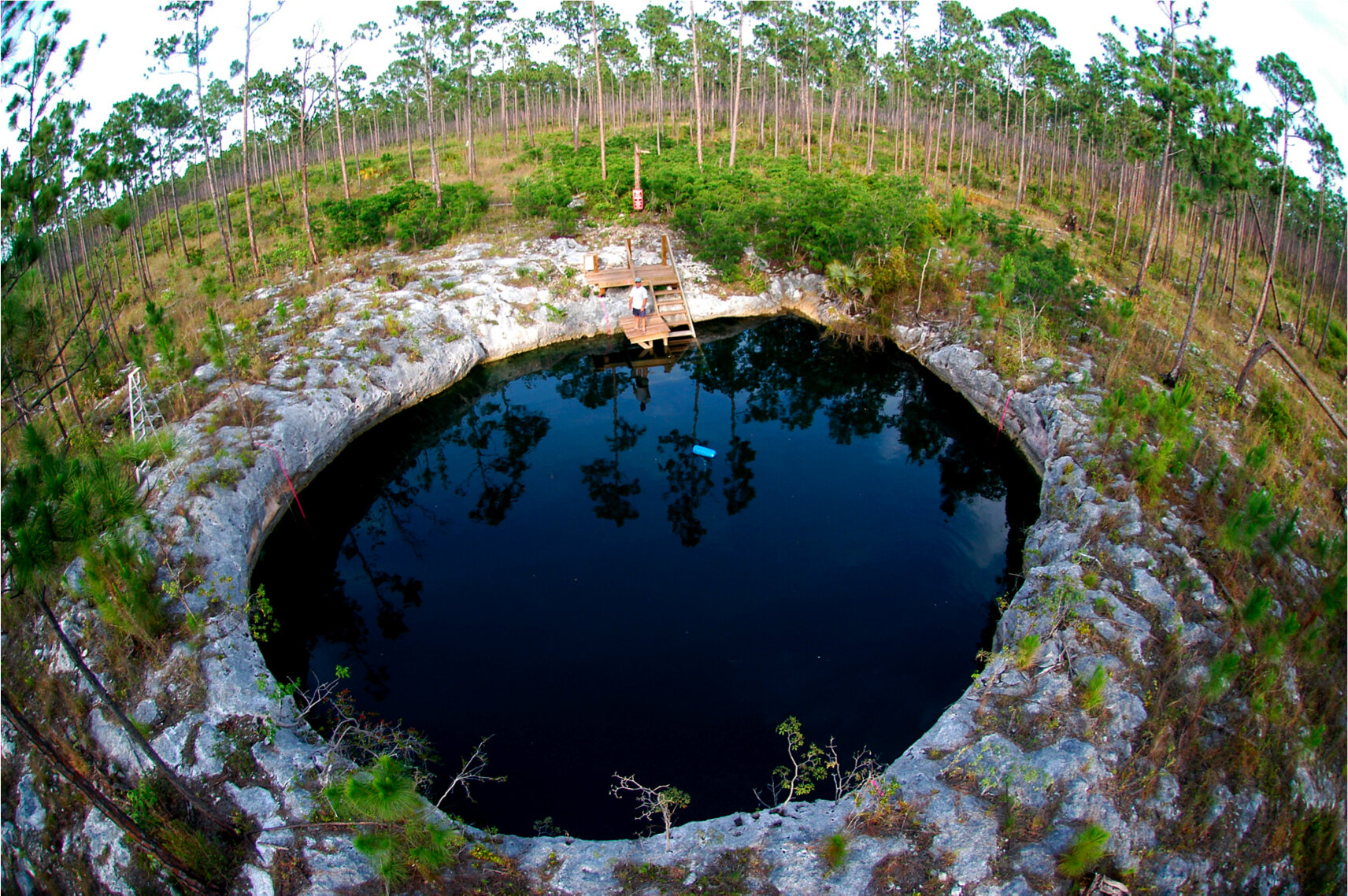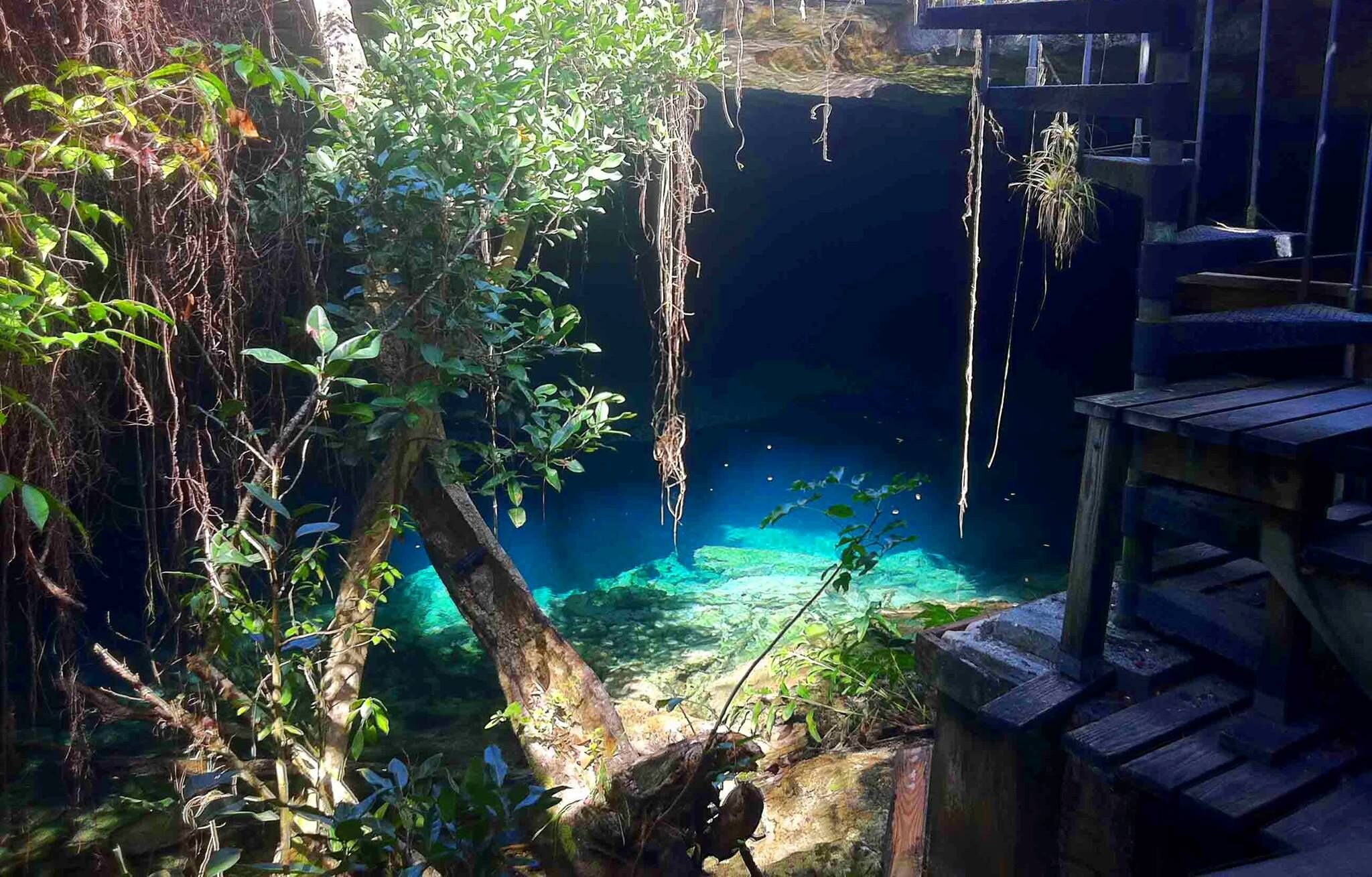The Bahamian Pine Forest
The Bahamian Pine Forest a terrestrial [land based] ecosystem that can be found on some islands in The Bahamas. This forest is mostly made up of the Caribbean Pine tree [also known as the Caribbean Yellow Pine]. This ecosystem can only found on 4 Bahamian islands: Abaco, Grand Bahama, New Providence and Andros.
The Caribbean Pine is a fast growing tree that can only thrive in open areas where it does not have to compete for space with other shady trees. Because of this, these trees use a tactic to get rid of any other competition growing in their area. This tactic is forest fires. During the hot, dry months of the year, forest fires help clear out any unwanted competitions within the pine forest.
Caribbean Pines and other non-competitive trees in this ecosystem are able to survive these fires. Caribbean Pines have a sap within their bark that extinguishes flames. They also don’t have any lower branches, therefore flames cannot easily climb up the trees and burn its leaves. Younger Caribbean Pine trees do not have as much resin in their bark and they also have lower branches, so they do not always survive forest fires. Other native, non-competitive trees you can find in the Bahamian Pine forest are Thatch palms. These palms grow a vegetable [which is edible] called the ‘heart of palm’ and this vegetable helps to protect palms during fires.
Rand Nature Centre Photo Credit: Amsee Photography
The Caribbean Pine Forest in Bahamian History
In the early 1900’s Bahamian Caribbean Pines were began to be used commercially for lumber. The logging of pines for commercial use started in Andros in 1906 and in New Providence in 1923. As the larger trees became harder to find on these islands, the industry turned started harvesting immature, smaller trees, which were ground into pulp for papermaking.
In 1905, A lumber mill was built on the island of Abaco in near Wilson City. The mill was moved through Abaco as the pinelands were used. After almost 40 years of harvesting Caribbean Pines for lumber, all of the virgin pine of Abaco had been deforested except for a small area north of Crossing Rocks in the south and another area between Norman's Castle and Marsh Harbour in the North.
In 1944 the Abaco lumber mill moved over to the island of Grand Bahama and remained open for large scale logging operations until the 1970's. In 1955, a man named Wallace Groves developed lumber interests in Grand Bahama. He made a deal [The Hawksbill Creek Agreement] with the Bahamian government that allowed him to log 50,000 acres of pine and in return Mr. Groves had to economically develop and manage the 50,000 acres. This area is now known as the City of Freeport and is the second most populated city in the Bahamas.
Wilson City Lumber MillPhoto source: Google Images
Current Status
Although the Caribbean Pine forest can only be found on 4 the northern islands of The Bahamas: Grand Bahama, Abaco, New Providence and Andros, some reports show that this forest was once found on the Berry Islands and is also known to grow in the Caicos Islands. Caribbean Pines are now protected in The Bahamas.
Ecological Importance
The Caribbean Pine Forests indicates the presence of a healthy freshwater lens system. Because the islands of The Bahamas are all made of limestone, rain water is filtered through the limestone and collects on top of the salt water. This collection of water is known as the fresh water lens. While Caribbean Pines can tolerate fire, they are incapable to tolerating salt water. So if there is a Pine Forest, there is freshwater available. In some Bahamian Pine Forests there are inland blue holes that are filled with fresh water [Like Sawmill Sink in Abaco or Captain Bill’s Blue Hole in Andros]. In other Bahamian Pine Forests there are Caves with freshwater caverns [like at the Lucayan National Park in Grand Bahama]
The pine forests of the Bahamas are home to a variety of animals like the wild boar, [A popular Abaconian game species], Bahamian Boa Constrictors and the Atala Hairstreak Butterfly. Many birds which are attracted to the variety of other plants that make up the Bahamian Pine Forest ecosystem. Plants like the Gumbo Limbo, White sage, Southern Bracken Fern, Wild Coffee and Wild Guava attract native and migratory birds to the area. Endemic birds like the Bahama Swallow, the White Crowned Pigeon and Bahama Yellow-Throat can be found throughout all the Bahamian Pine Forests and the Bahama Parrot is a Pine resident in south Abaco. During the colder months migratory birds like the Cape May Warbler, Black and White Warbler and even the Kirtland's warbler can also be found in the Pine Forest.
Bahama SwallowPhoto source: Google Images







